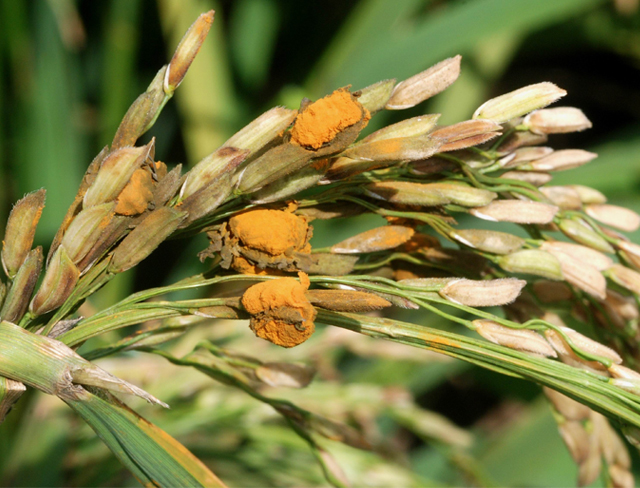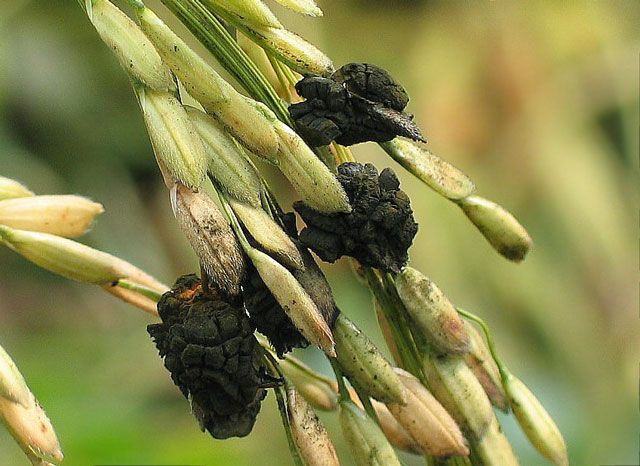False smut
 What it does
What it does
False smut causes chalkiness of grains which leads to reduction in grain weight. It also reduces seed germination.
Why and where it occurs
The disease can occur in areas with high relative humidity (>90%) and temperature ranging from 25−35 ºC.
Rain, high humidity, and soils with high nitrogen content also favors disease development. Wind can spread the fungal spores from plant to plant.
False smut is visible only after panicle exsertion. It can infect the plant during flowering stage.
How to identify
Check for presence of velvety smut balls on spikelets.
 Spore balls are initially orange and turn greenish black when maturePlants infected with false smut have individual rice grain transformed into a mass of spore balls. These spore balls are initially orange, and then turn into greenish black when these mature.
Spore balls are initially orange and turn greenish black when maturePlants infected with false smut have individual rice grain transformed into a mass of spore balls. These spore balls are initially orange, and then turn into greenish black when these mature.
In most cases, not all spikelets of a panicle are affected, but spikelets neighboring smut balls are often unfilled.
- Individual rice grain transformed into a mass of velvety spores or yellow fruiting bodies
- Growth of velvety spores enclose floral parts
- Immature spores slightly flattened, smooth, yellow, and covered by a membrane
- Growth of spores result to broken membrane
- Mature spores orange and turn yellowish green or greenish black
- Only few grains in a panicle are usually infected and the rest are normal
Why is it important
The disease affects the early flowering stage of the rice crop when the ovary is destroyed. The second stage of infection occurs when the spikelet nearly reaches maturity.
These causes chalkiness and can reduce 1,000-grain weight. It also causes a reduction in seed germination of up to 35%. In damp weather, the disease can be severe and losses can reach 25%. In India, a yield loss of 7−75% was observed.
How to manage
- Keep the field clean.
- Remove infected seeds, panicles, and plant debris after harvest.
- Reduce humidity levels through alternate wetting and drying (AWD) rather than permanently flooding the fields.
- Where possible, perform conservation tillage and continuous rice cropping.
- Use moderate rates of Nitrogen.
- Use certified seeds.
- Resistant varieties have been reported. Contact your local agriculture office for an up-to-date list of available varieties.
- Treat seeds at 52°C for 10 min.







